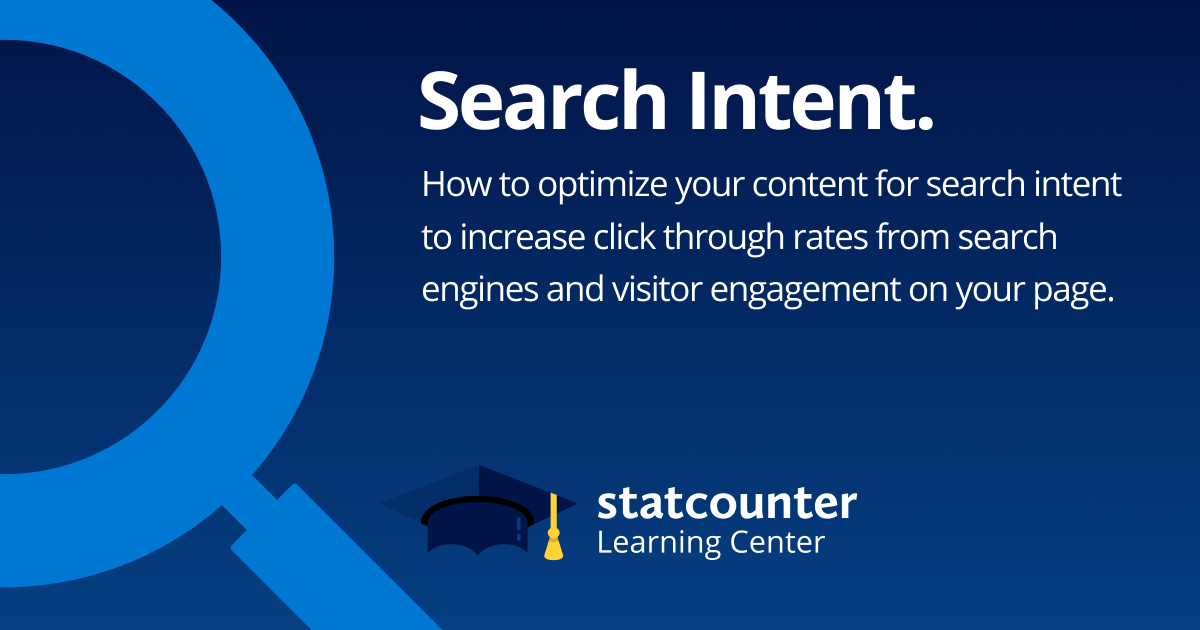Tube Rank: Your Guide to Video Success
Discover tips and insights for optimizing your video presence.
Navigating the Maze of Search Intent
Unlock the secrets of search intent! Discover how to optimize your content and boost your traffic with expert insights. Dive in now!
Understanding the Different Types of Search Intent: A Comprehensive Guide
Search intent refers to the purpose behind a user's query, and understanding it is crucial for effective SEO strategies. There are generally four primary types of search intent: informational, navigational, transactional, and commercial investigation. Each type serves a distinct purpose, guiding users through their online journey. For instance, someone searching for 'What is SEO?' is likely demonstrating informational intent, aiming to gather knowledge rather than purchase. On the other hand, a query like 'buy running shoes online' indicates a strong transactional intent, where the user is ready to make a purchase.
Understanding these different types of search intent can significantly improve your content targeting and SEO performance. To summarize:
- Informational Intent: Users seek answers or information.
- Navigational Intent: Users look for a specific website or page.
- Transactional Intent: Users intend to make a purchase.
- Commercial Investigation: Users are researching before making a purchase decision.
By aligning your content with the user's intent, you can enhance user experience, drive relevant traffic, and ultimately increase conversions.

How to Optimize Your Content for User Search Intent
Optimizing your content for user search intent is crucial for driving relevant traffic to your blog. User search intent refers to the purpose behind a user's search query, and understanding this intent can significantly enhance your content's effectiveness. Start by conducting keyword research to identify the most common phrases and questions related to your niche. Use tools like Google Keyword Planner or SEMrush to analyze search volume and user intent behind each keyword. Once you have this data, categorize keywords into three main types: informational, navigational, and transactional. This classification will help you create content that aligns with what your audience is truly looking for.
Once you've identified the different types of search intent, it's essential to tailor your content accordingly. For informational searches, focus on creating comprehensive guides or how-to articles that provide detailed, valuable information. For navigational intent, ensure your website is user-friendly, making it easy for visitors to find what they’re looking for without frustration. Lastly, for transactional searches, highlight product features, customer reviews, and compelling calls-to-action to drive conversions. By consistently aligning your content with user search intent, you not only improve your SEO but also enhance user satisfaction and engagement.
What Is Search Intent and Why Is It Crucial for SEO?
Search intent refers to the purpose behind a user's search query, essentially answering the question: what does the user hope to achieve by entering specific terms into a search engine? Understanding search intent is crucial because it dictates how content should be structured and what keywords should be prioritized. There are generally four types of search intent: informational, navigational, transactional, and commercial investigation. By aligning your content with these categories, you can effectively cater to the needs of your audience and improve the relevance of your pages.
Implementing strategies that focus on search intent can significantly enhance SEO performance. When search engines assess the relevance of a webpage, they consider not just the keywords, but how well the content satisfies the user's intent. If a website consistently meets search intent, it is more likely to rank higher in search results, leading to increased organic traffic. In this competitive landscape, prioritizing search intent allows you to create meaningful content that resonates with users and ultimately drives conversions.